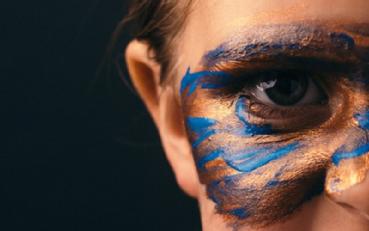WMG News
WMG staff appointed as Fellows in the new Warwick Institute of Engagement
Congratulations to our staff members whose appointments as the new Foundation, Honorary and Associate Fellows have been announced by The Warwick Institute of Engagement (WIE).
The role of the Fellows will be to establish the Institute as an interdisciplinary hub for the whole university, and work together to create exciting new engagement opportunities for staff and students.
Over the next few months the Institute will be creating a series of Learning Circles with the new Engagement Fellows. These Circles will cover a range of topics such as the future of engagement in HE, collaborating with communities and student training in Public Engagement. Longer term they are committed to supporting staff and students in providing up to date training and development opportunities and supporting institutional level engagement events such as City of Culture.
Professor Michael Scott and Jane Furze, Directors of the Warwick Institute of Engagement, said:
“Congratulations to all our new Fellows! We’re delighted to have attracted such a diverse, multi-disciplinary range of colleagues and students to join the Institute. Engagement is all about universities working with people and listening to voices outside academia to create and share knowledge collaboratively. Collectively, we have a great foundation to build on the fantastic engagement work already happening at Warwick and drive forward our genuinely new and exciting approach to engagement.”
WMG staff WIE fellows:
Foundation Fellows:
Evé Wheeler-Jones
Ian Tuersley
Phil Jemmett
Honorary Fellows:
Caroline Meyer
Lisa Harding
Margaret Low
Associate Fellows:
Dave Harvey
Mark Williams
New MRI computing technique can spot scar muscles of heart without damaging kidneys
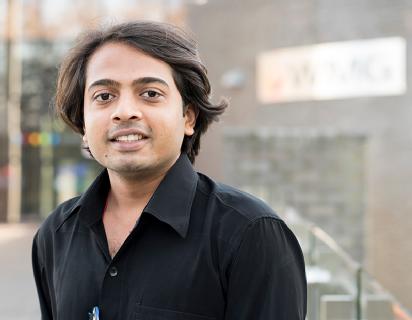 - Traditional MRI scans use the metal gadolinium, which resonates areas of the heart muscles that are not functioning efficiently, however gadolinium affect the Kidney function
- Traditional MRI scans use the metal gadolinium, which resonates areas of the heart muscles that are not functioning efficiently, however gadolinium affect the Kidney function
- The new 3D MRI computing technique calculates strain in heart muscles showing which muscles are not functioning enough without damaging other organs - researchers at WMG, University of Warwick have found
- The new technique is less stressful for the patient
3D MRI computing can measure strain in the heart using image registration method. Traditional method involves giving the patient a dose of gadolinium which can affect the kidney, researchers at WMG, University of Warwick have found.
MRIs are used to diagnose cardiac disease such as cardiomyopathy, heart attacks, irregular heartbeats and other heart disease.
Traditionally when a patient goes for an MRI scan they are given a dose of gadolinium, which reacts the magnetic field of the scanner to produce an image of the protons in the metal realigning with the magnetic field. The faster the protons realign, the brighter the image features and can show where the dead muscles are in the heart and what the diagnosis is.
The dose of gadolinium can have detrimental effects to other parts of the body, particularly the risk of kidney failure.
A new 3D MRI computing technique developed by scientists in WMG at the University of Warwick, published today, 28th August, in the Journal Scientific Reports titled ‘Hierarchical Template Matching for 3D Myocardial Tracking and Cardiac Strain Estimation’ focuses on Hierarchical Template Matching (HTM) technique. Which involves:
- A numerically stable technique of LV myocardial tracking
- A 3D extension of local weighted mean function to transform MRI pixels
- A 3D extension of Hierarchical Template Matching model for myocardial tracking problems
Therefore meaning there is no need for gadolinium reducing the risk of damage to other organs.
Professor Mark Williams, from WMG at the University of Warwick comments:
“Using 3D MRI computing technique we can see in more depth what is happening to the heart, more precisely to each heart muscles, and diagnose any issues such as remodelling of heart that causes heart failure. The new method avoids the risk of damaging the kidney opposite to what traditional methods do by using gadolinium.”
Jayendra Bhalodiya, who conducted the research from WMG, University of Warwick adds:
“This new MRI technique also takes away stress from the patient, as during an MRI the patient must be very still in a very enclosed environment meaning some people suffer from claustrophobia and have to stop the scan, often when they do this they have to administer another dose of the damaging gadolinium and start again. This technique doesn’t require a dosage of anything, as it tracks the heart naturally.”
The British Science Festival is coming to Coventry and Warwickshire
One of Europe’s largest science festivals is coming to town between September 10th and 13th.
With a schedule comprising more than 100 free events, activities and performances, the British Science Festival will “transform the region into a celebration of science and culture”.
The festival will feature talks from a selection of WMG experts, including Erik Kampert - Senior Research Fellow, Dave Greenwood – Professor of Advanced Propulsion Systems, Mark Williams – Professor of Metrology and Alan Chalmers – Professor of Visualisation.
Held in partnership with the University of Warwick, the programme highlights local strength in digital technologies, smart cities and the future of energy and healthcare.
There’s a special emphasis on the fun, thought-provoking, and societal aspects of science to show how it’s not just confined to laboratories, but something that’s all around us.
Plus, there will be a special filming of The Sky at Night: Question Time with Dr Maggie Aderin-Pocock and Professor Chris Lintott.
Other highlights include interactive experiences like a live 3-D psychedelic show and festival carpool in a driverless pod, discussions on how ‘gaming becomes gambling’, how AI could revolutionise cancer treatment, and how to tackle food poverty with food writer Jack Monroe.
Not to mention, a mud kitchen and tea-blending for adults and a takeover of Coventry’s FarGo Village with comedy, artistic workshops and an escape room.
Book here.
WMG hat-trick at University Awards!
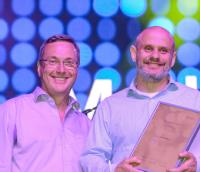
Congratulations to the brilliant Lucy Inman and Professor Mark Williams who both won a prestigious University Award last night.
 Lucy, who is Teaching and Learning Officer in the WMG Full-time Master's office won the top prize in the Service Excellence category.
Lucy, who is Teaching and Learning Officer in the WMG Full-time Master's office won the top prize in the Service Excellence category.
The judges said: “Lucy leads by example, bringing a calm and thoughtful approach to problems, working to resolve things to ensure the best possible outcome for students, and also putting measures in place to ensure it doesn’t repeat, or to mitigate the impact where matters
are likely to repeat."
Professor Mark Williams, who heads up the Metrology area at WMG, received the Research Contribution Award. “Through a passion for 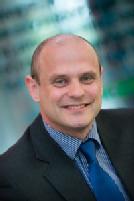 knowledge and a nose for a great mystery, Mark is inspiring hundreds of people and answering age-old questions. He is a credit to Warwick and a
knowledge and a nose for a great mystery, Mark is inspiring hundreds of people and answering age-old questions. He is a credit to Warwick and a
perfect example of what can be achieved when people leave the confines of their main
area of research."
WMG’s involvement in the University’s Family Day was also recognised at the Awards, with the team scooping highly commended in the Community Contribution Award category.
The Warwick University Awards recognise outstanding individuals and teams from across the University. After the award ceremony staff enjoyed a special summer party with a festival theme including live music from Scouting for Girls.
Earliest known Mariner’s Astrolabe research published today to go in Guinness Book of Records
Guinness World Records have independently certified an astrolabe excavated from the wreck site of a Portuguese Armada Ship that was part of Vasco da Gama’s second voyage to India in 1502-1503 as the oldest in the world, and have separately certified a ship’s bell (dated 1498) recovered from the same wreck site also as the oldest in the world.
A gunmetal disc excavated from the wreck site of a Portuguese Armada Ship and identified as a mariner’s astrolabe – and the earliest known example - by engineers at WMG, University of Warwick is to be published in the The International Journal of Nautical Archaeology
The astrolabe was discovered by David L. Mearns of Blue Water Recoveries Ltd, who directed the three-year archaeological project in collaboration with Oman’s Ministry of Heritage and Culture
It has been named the Sodré astrolabe after the commander of the ship in which it was found: Vicente Sodré was the maternal uncle of Vasco da Gama and died when his ship, the Esmeralda, wrecked on the remote Omani Island of Al Hallaniyah in 1503.
It will be listed in the Guinness Book of World Records as the oldest mariner’s astrolabe from as early as 1496
The scientific process of verifying the disc as an astrolabe by laser imaging is described in a paper published today by Mearns and Jason Warnett and Mark Williams of WMG at the University of Warwick in The International Journal of Nautical Archaeology.
The Sodré astrolabe which has made it into the Guinness Book of World Records is believed to have been made between 1496 and 1501 and is unique in comparison to all other mariner’s astrolabes.
Mariner’s Astrolabes were used for navigating at sea by early explorers, most notably the Portuguese and Spanish.
They are considered to be the rarest and most prized of artefacts to be found on ancient shipwrecks and only 104 examples are known to exist in the world.
They were first used at sea on a Portuguese voyage down the west coast of Africa in 1481. Thereafter, astrolabes were relied on for navigation during the most important explorations of the late 15th century, including those led by Bartolomeu Dias, Christopher Columbus and Vasco da Gama.
It is the only solid disk type astrolabe with a verifiable provenance and the only specimen decorated with a national symbol: the royal coat of arms of Portugal.
As the earliest verifiable mariner’s astrolabe it fills a chronological gap in the development of these iconic instruments and is believed to be a transitional instrument between the classic planispheric astrolabe and the open-wheel type astrolabe that came into use sometime before 1517.
The thin 175 mm diameter disk weighing 344 grams was analysed by a team from WMG who travelled to Muscat, Oman in November 2016 to collect laser scans of a selection of the most important artefacts recovered from the wreck site.
Using a portable 7-axis Nikon laser scanner, capable of collecting over 50,000 points per second at an accuracy of 60 microns, a 3D virtual model of the artefact was created. Analysis of the results revealed a series of 18 scale marks spaced at uniform intervals along the limb of the disk.
Further analysis by WMG engineers showed that the spacing of the scale marks was equivalent to 5-degree intervals. This was critical evidence that allowed independent experts at Texas A&M University to include the disk in their global inventory as the earliest known mariner’s astrolabe discovered to date.
Prof Mark Williams from WMG, University of Warwick comments:
“Using this 3D scanning technology has enabled us to confirm the identity of the earliest known astrolabe, from this historians and scientists can determine more about history and how ships navigated.
Technology like this betters our understanding of how the disc would have worked back in the 15th century. Using technology normally applied within engineering projects to help shed insight into such a valuable artefact was a real privilege”
David Mearns of Blue Water Recoveries Ltd comments:
“Without the laser scanning work performed by WMG we would never have known that the scale marks, which were invisible to the naked eye, existed. Their analysis proved beyond doubt that the disk was a mariner’s astrolabe. This has allowed us to confidently place the Sodré astrolabe in its correct chronological position and propose it to be an important transitional instrument.”
Car component quality testing technology helps hip surgeons ensure prostheses bind to bones
Hip surgeons are making significant advances in designing hip replacement components using additive manufacturing (3D printing) but have been struggling to devise easy methods of testing the designs they have created without using destructive testing techniques. Now researchers in WMG at the University of Warwick have devised a way of examining and ensuring the quality of those designs without destructive testing using scanning techniques normally used to examine new component designs for high-end automotive manufacturing.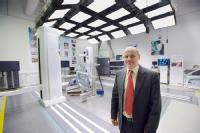
Successful surgical reconstruction or replacement of a joint (arthroplasty) requires integration of the prosthetic implant with the bone to replace the damaged joint. Surgeons therefore seek to use Bone-mimetic biomaterials for implants as their mechanical properties and porous structure can be designed to allow bone ingrowth and help fix the implant.
Dodo’s violent death revealed
The famous Oxford Dodo died after being shot, according to breakthrough research by Oxford University Museum of Natural History and WMG at the University of Warwick.
Using revolutionary forensic scanning technology and world-class expertise, researchers have discovered surprising evidence that the Oxford Dodo was shot in the neck and back of the head with a shotgun.
The significant and unexpected findings, made by Professor Paul Smith, director of the Museum of Natural History, and Professor Mark Williams from WMG at the University of Warwick, only became apparent when mysterious particles were found in the specimen during scans carried out to help analyse its anatomy.
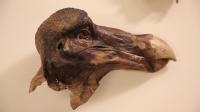 Subsequent analysis of the material and size of the particles revealed that they are lead shot pellets, typically used to hunt wildfowl during the 17th century.
Subsequent analysis of the material and size of the particles revealed that they are lead shot pellets, typically used to hunt wildfowl during the 17th century.
The findings cast doubt on the popular theory that the Oxford Dodo is the remains of a bird kept alive in a townhouse in 17th-century London.
Queen’s wedding cake resurrected with scanning tech for 70th Anniversary
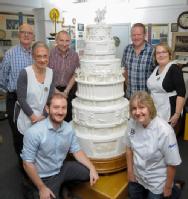 Cutting-edge technology has brought Queen Elizabeth II’s wedding cake back to life in time for hers and Prince Philip’s 70th anniversary, thanks to research by WMG at the University of Warwick.
Cutting-edge technology has brought Queen Elizabeth II’s wedding cake back to life in time for hers and Prince Philip’s 70th anniversary, thanks to research by WMG at the University of Warwick.
Professor Mark Williams at WMG, alongside the British Sugarcraft Guild (BSG), employed 3D scanning technology to recreate a full-sized replica of a cake presented to the royal couple on their wedding day in November 1947 – which was almost totally destroyed by vandals in 2015.
The technology was able to accurately scan the cake to within 0.1mm and reproduce a high-resolution 3D model that was then be used to digitally repair the cake.
Analysing the surviving parts of the cake – an intricate 6ft ensemble, consisting of 6 tiers – Professor Williams was able to discover exactly how it was formed, and to determine precisely how to restore its original grandeur.
There were elaborate pictorial panels on each tier of the cake, the moulds of which had been lost through the decades. However, WMG’s engineering technology recreated these images from the wedding cake, and produced new silicone moulds through 3D scanning.
Oldest known marine navigation tool revealed with scanning technology
Details of the oldest known marine navigation tool, discovered in a shipwreck, have been revealed thanks to state-of-the-art scanning technology at WMG, University of Warwick.
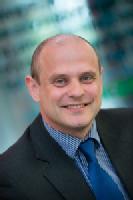 Professor Mark Williams was tasked with scanning the artefact – an astrolabe from the late fifteenth century, used by mariners to measure the altitude of the sun during voyages – which was excavated in 2014 by Blue Water Recovery.
Professor Mark Williams was tasked with scanning the artefact – an astrolabe from the late fifteenth century, used by mariners to measure the altitude of the sun during voyages – which was excavated in 2014 by Blue Water Recovery.
When the team found the object, no markings were visible – they believed it was an astrolabe, but they could not see any navigational 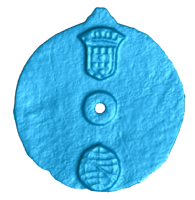 markings on it.
markings on it.
They then approached Professor Williams, who conducts pioneering scanning analyses in his laboratory at WMG, to reveal the artefact’s invisible details.
The scans showed etches around the edge of the object, each separated by five degrees – proving that it is an astrolabe.
These markings would have allowed mariners to measure the height of the sun above the horizon at noon to determine their location so they could find their way on the high seas.
World's 'first named dinosaur' reveals new teeth with scanning tech
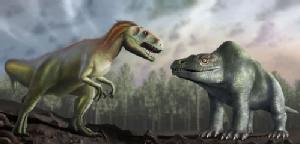 Pioneering technology has shed fresh light on the world’s first scientifically-described dinosaur fossil – over 200 years after it was first discovered - thanks to research by WMG at the University of Warwick and the University of Oxford’s Museum of Natural History.
Pioneering technology has shed fresh light on the world’s first scientifically-described dinosaur fossil – over 200 years after it was first discovered - thanks to research by WMG at the University of Warwick and the University of Oxford’s Museum of Natural History.
Professor Mark Williams at WMG has revealed five previously unseen teeth in the jawbone of the Megalosaurus – and that historical repairs on the fossil may have been less extensive than previously thought.

